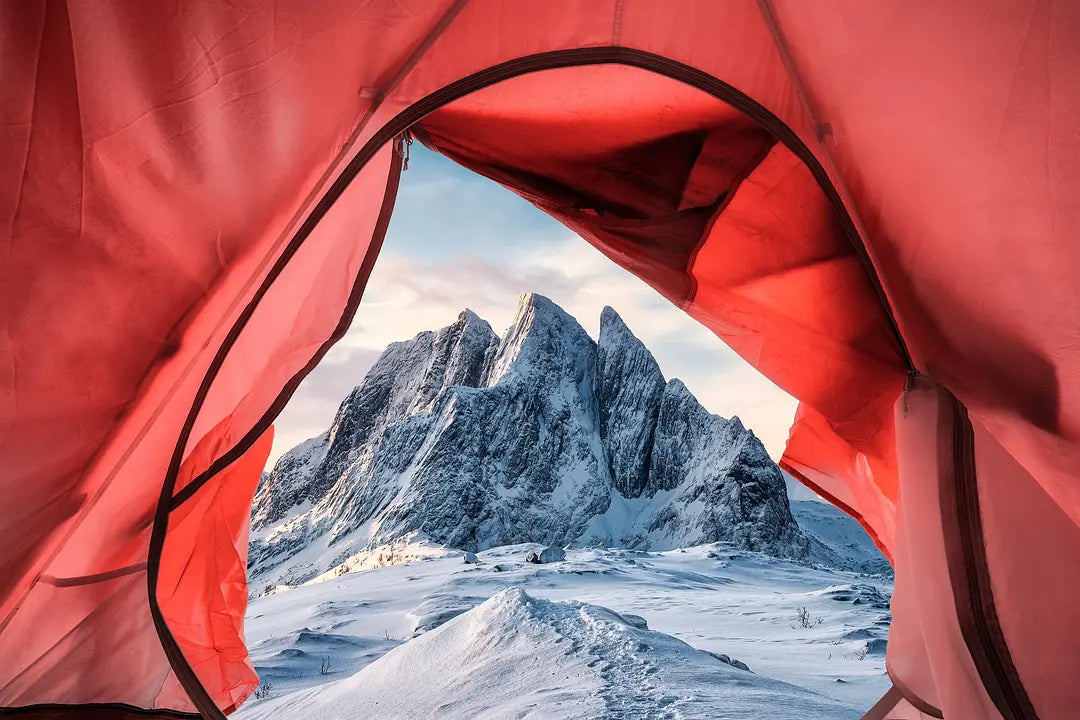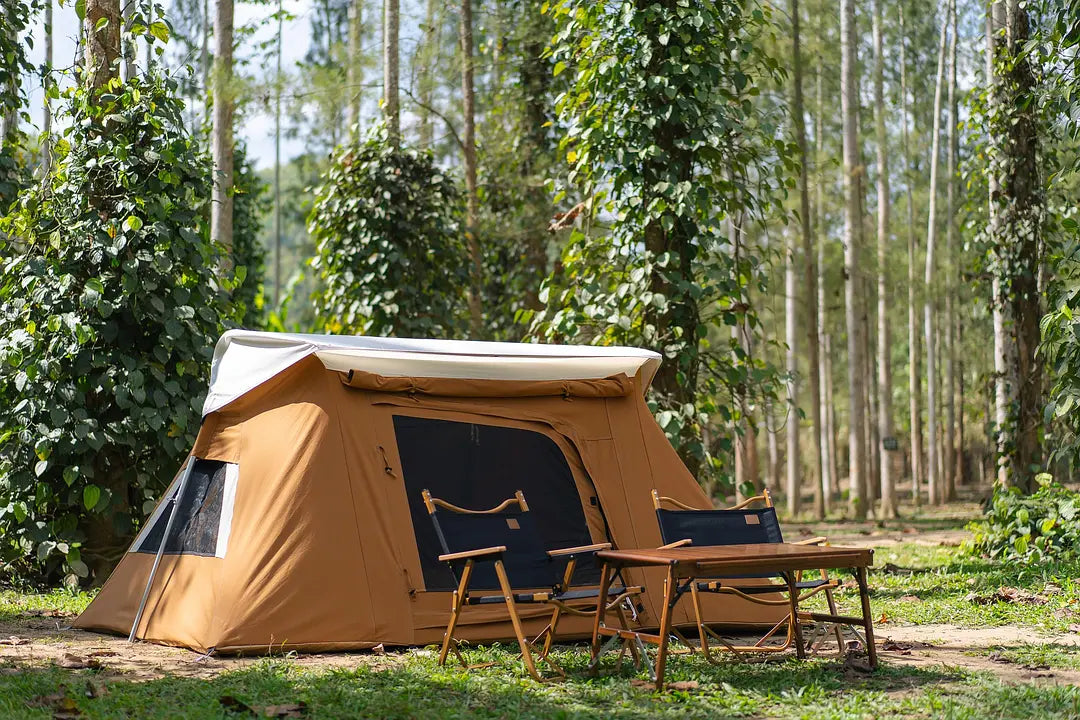Winter Season: Top Ten Essential Outdoor Camping Tips
Winter Season: Top Ten Essential Outdoor Camping Tips
Camping has risen as one of the most popular outdoor activities in the 'post-pandemic era' in recent years, offering urban youth their preferred means to unwind from work-related stress, combat fatigue, and reconnect with nature. Each time they return from a camping trip, they hold dear the breathtaking morning landscapes unveiled when they unzip their tents, yearn for the sweet and fragrant meadow air, crave the freedom of spending an entire day outdoors, and relish the delightful surprises of exploring and discovering new campsites.

Winter camping stands out as the simplest of all seasons: no bothersome insects, abundant sources of drinkable water, and readily accessible resting spots. So, what should you keep in mind when embarking on a winter camping adventure? Haimont has put together 10 tips to aid in your preparations and ensure your personal safety in case you find yourself lost in the wilderness.
- The most critical camping advice is to set up your camp before nightfall.
Setting up your camp before nightfall can ensure a safer, more enjoyable, and efficient camping experience.
When it comes to choosing the type of campsite, whether it's a tent, camping vehicle, or cabin, it's entirely up to your preferences. Tents, while the most basic form of shelter for camping, can offer quite a comfortable experience if you prepare adequately. The suitability of your choice will depend on the tent's size, shape, and weight.
Remember, a bigger tent doesn't necessarily mean it's better – after all, you have to carry it to the campsite.
Before embarking on your camping trip, it's essential to test your tent at home to identify and address any issues, ensuring a trouble-free experience in the wilderness. Additionally, bring spare tent poles just in case, as pole breakage can occur.
- Tips regarding sleeping bags: Select a sleeping bag suitable for the season.
In warmer months, you can opt for lightweight sleeping bags, but in winter, you'll need a bag capable of withstanding low temperatures. The temperature rating should be lower than the expected temperature during your camping trip to account for potential drops in temperature. If you plan to sleep in a tent, consider a mummy-shaped sleeping bag. This style of sleeping bag can snugly wrap around your feet, retaining body heat, and is also easy to carry.
[Ground Mat] In winter, the cold isn't just from the chilly air; a significant portion comes from the ground. To improve insulation, it's advisable to use a double ground mat – a foam mat combined with an inflatable mat.
[Sleeping Bag] Unless your sleeping bag fits snugly, excessive looseness won't provide efficient insulation. If there are gaps, you can use extra clothing to fill them.
Avoid placing the sleeping bag directly on the ground. You can lay down branches and outer clothing beneath the sleeping bag or place some rocks and dry grass. Prior to use, fluff up the sleeping bag thoroughly for better insulation. After each use, release the warm air inside the bag to prevent moisture condensation that can make the sleeping bag damp.
- Camping tips related to food and drink: Carry only essential food items.
No set of camping tips is complete without addressing food and water. Regardless of the level of risk in your camping trip, be it hiking, kayaking, or simply relaxing in a camping vehicle, you'll need food.
You can estimate the amount of food needed for each meal based on experience. For instance, if you have a small group, bring five packets of instant oatmeal instead of a whole canister of oatmeal. Store food in sealed plastic bags. If you're camping near a vehicle, you can use a cooler to store perishable foods like meat, preventing spoilage.
- Winter outdoor camping attire
Keeping your clothing dry is crucial, particularly ensuring your gloves and socks remain dry. It's best to dry them by the fire or place them inside your sleeping bag at night to benefit from your body heat for drying. When getting into the sleeping bag, avoid wearing too many clothes, as excess layers can lead to sweating, making the bag damp and reducing its insulation. It's advisable to keep your shoes well-encased inside the sleeping bag to prevent them from freezing solid by morning.
Winter outdoor attire typically comprises three layers (excluding underwear):
- First layer, underwear: This is less critical at lower altitudes (cotton underwear is suitable for higher altitudes). However, it's best to avoid pure cotton underwear, and you can even skip this layer and wear fleece pants instead.
- Second layer, fleece clothing: It's best not to substitute fleece clothing, as all alternatives tend to be more expensive. Fleece has the advantage of quick drying, moisture-wicking, lightweight, and provides insulation even when wet.
- Third layer, outerwear: This includes pants, windproof fleece jackets, or loose windproof clothing primarily designed to prevent heat loss, block cold air, and protect against moisture from snow.
- Choose appropriate clothing
It's not about fashion; preparing the right outdoor apparel is as vital as other techniques.
Wear loose-fitting and clean clothes. During colder months, layering is important. For example, wear hats, gloves, jackets, and thermal underwear. However, it's crucial to shed a few layers before you start sweating to keep your body dry, as damp clothes can lead to discomfort.
Next, select your footwear. Protecting your feet is essential during camping. Opt for shoes that don't expose your toes, as the lining can absorb sweat. Hiking boots are ideal.
There's a method to prevent blisters while hiking by applying a layer of soap under the ankle and toes before setting out. Carry soap with you, so you can apply it in potential problem areas if your feet are at risk of blistering.
Always bring a rain poncho in case of rain. The last thing you want is your clothes getting soaked, which could lead to hypothermia.
- Avoiding Insects, Bears, and Toxic Plants
When setting up your tent or any other shelter, be vigilant for signs of wasp nests, insects, and bugs. If you frequently find yourself near plants, it's advisable to wear long-sleeved shirts and pants.
Using insect repellent can help protect you from insect bites. Regularly check yourself for tick bites.
Do you know how to steer clear of poison ivy and identify its distinctive three-leaf clusters? Poison oak and poison sumac, which have even more leaves per cluster, require even greater caution. When you're in proximity to plants, shrubs, and forests, make sure to cover yourself from head to toe to reduce the chances of developing a rash. It's a good idea to carry calamine lotion and antihistamines or allergy medication in case you encounter something irritating.
As we've learned before, proper food storage and handling can prevent bears from crashing your outdoor feast. Keep your food elevated, such as hanging it from a rope or placing it in the branches of tall trees.
- Avoid Getting Lost
This is a mistake many campers make, but with some simple tools on hand, you can avoid straying too far from the campsite. Compasses, maps, and GPS devices can prevent you from getting lost.
Of course, these tools won't be of much help if you don't know how to use them. So, before your camping journey begins, take some time to learn how to read a map, use a compass, and operate a GPS.
- Carry a Survival Backpack
When you venture away from the campsite for an adventure, carrying a hiking backpack is an absolute necessity.
So, what should be in this backpack? First, it should contain water purification tablets, a water purifier, and a metal cup. Additionally, include a survival knife that can be used for hunting, self-defense, and signaling for help. It has more uses than a standard blade, making it a worthwhile purchase from camping and outdoor supply stores.
Besides the survival backpack, you should also have a first aid kit with you. This kit should contain bandages, wound cleansing solution, medical gloves, and ice packs.
- Maintaining Hygiene
But you may wonder how to maintain hygiene in less-than-ideal conditions. Remember the following:
- Carry a bottle of hand sanitizer in your pocket and use it to clean your hands before eating, drinking, or touching your face.
- Use cotton balls dipped in rubbing alcohol to wipe non-sensitive areas of your body.
- Take bird baths using a sponge, a basin of water, and biodegradable soap to wash once or twice a day.
- Brush your teeth with clean water and toothpaste or baking soda, then use dental floss.
- Your feet will get very dirty during camping, so when you encounter a river, take off your shoes and soak your feet in the water for a few minutes.
- When packing your belongings, separate toiletries like towels, toothbrushes, and soap in aluminum foil to prevent them from getting other items in your backpack wet.
- Taking Extra Precautions when Camping with Pets
Camping with pets can be demanding, but it can also be a delightful experience. As Biji has learned, the key to a successful camping trip lies in pre-planning. It determines whether this camping trip will go the distance.
Be sure to bring the right supplies to protect your pet. Have warm clothing on hand for your pet in case of sudden temperature drops.

Camping emphasizes the idea of connecting with nature, breaking away from busy city life, and camping in the mountains, which resonates with today's leisure preferences. Furthermore, camping offers the advantage of being highly accessible – all you require is a tent and a picnic mat, and you're ready to roll. The timing is quite flexible; you can do it in just half a day, and extensive planning is not a necessity. Revel in the experience of immersing yourself in nature and finding your sense of freedom.









